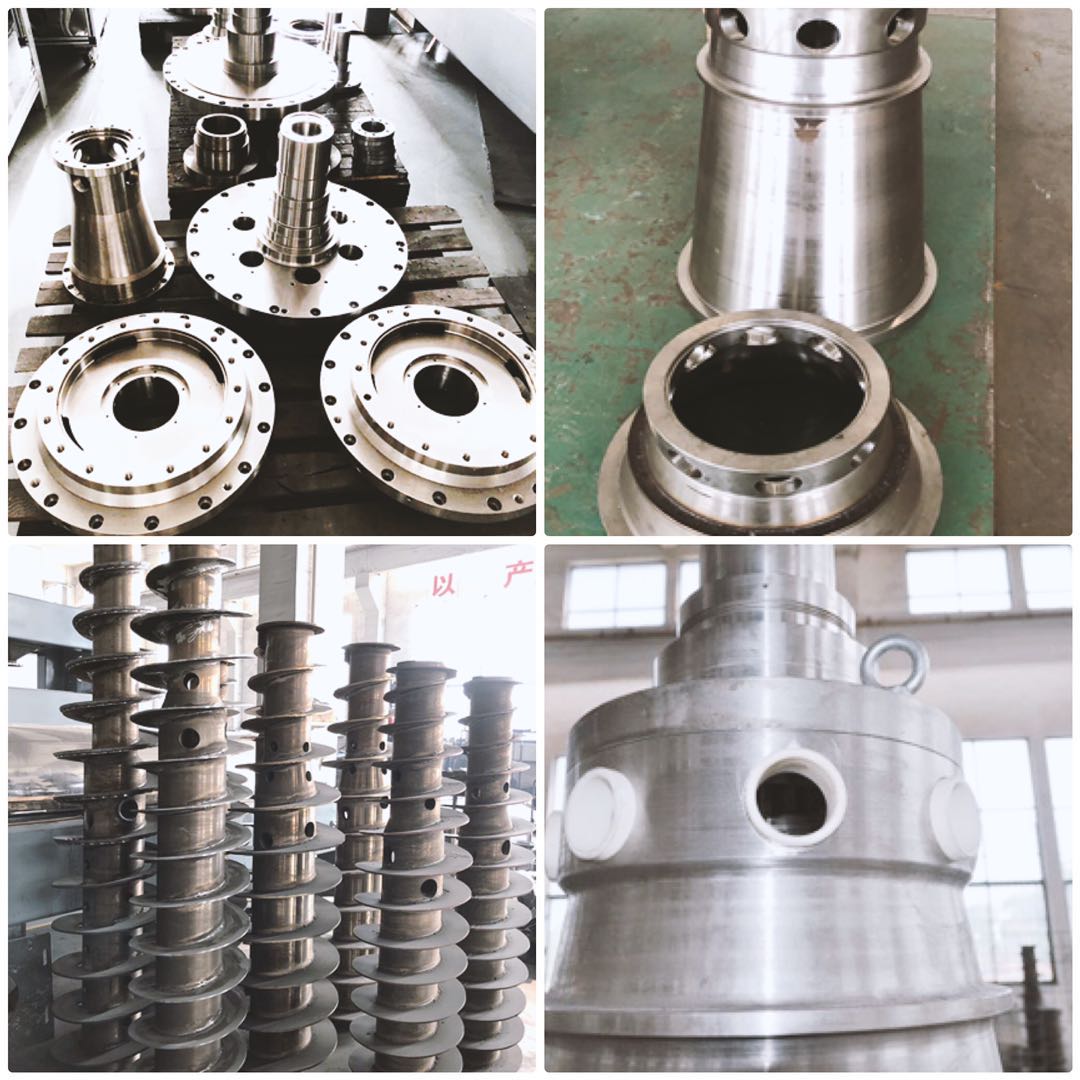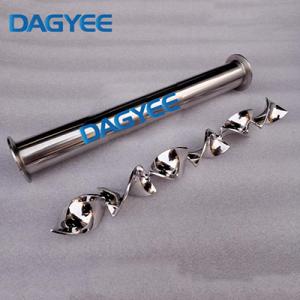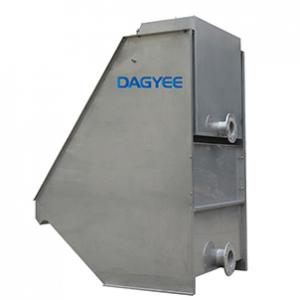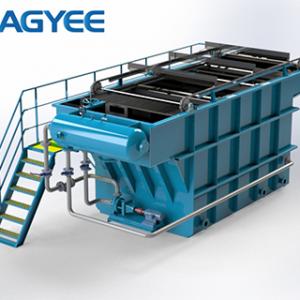Description
WHAT IS CENTRIFUGE DECANTER
When you need to separate solid / liquid mixtures with high solids content, you can choose a decanter centrifuge. In contrast to chamber filter presses, these solid vortex centrifuges or decanter centrifuges operate continuously. High centrifugal forces separate finely divided solid particles from the suspension.
Our decanter centrifuges are modular in design and can be used in a wide range of industries. Centrifuges can be optimally adjusted for specific applications. Applications range from sludge dewatering to classification or wet classification to solid classification.
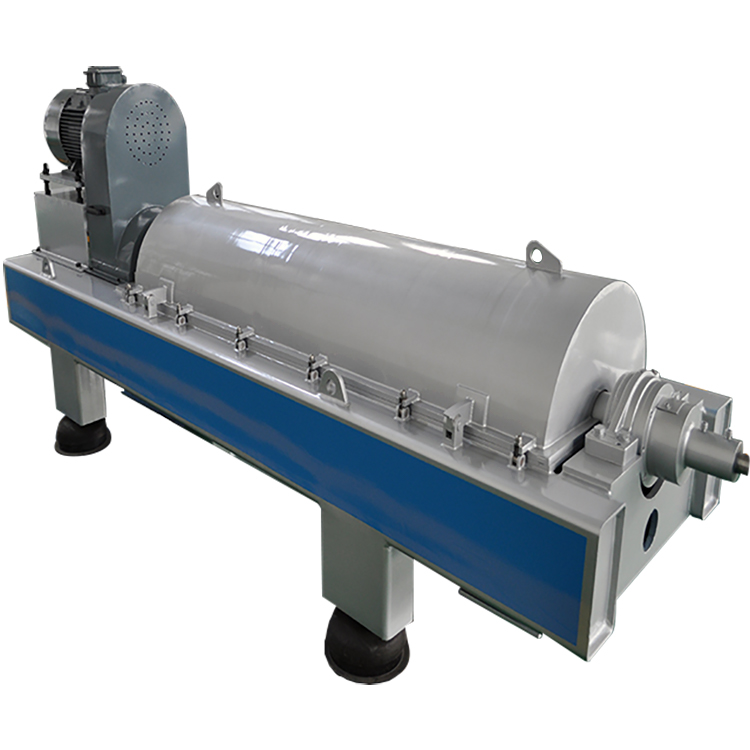
HOW DOES IT WORK
The feed product is pumped into the decanter centrifuge through an inlet. Feed into a horizontal bowl and then rotate. The bowl consists of a cylindrical portion and a conical portion. The separation takes place in the cylindrical part of the bowl. Fast rotation produces centrifugal forces of up to 4000 x g. Under these forces, solid particles with a higher density are collected and compacted on the wall of the bowl. The scroll (also a screw conveyor or screw conveyor) rotates inside the bowl at slightly different speeds. This speed difference is called a differential speed. In this way, the scroll conveys the precipitated particles along the cylindrical portion of the bowl to the conical end of the bowl. At the smallest end of the conical portion of the filter bowl, dehydrated solids leave the filter bowl through the discharge port. The clarified liquid exits through the mating disc (internal centrifugal pump).
With a 3 phase decanter centrifuge, it is possible to separate 3 phases from each other in one process step only. For example, two liquids which cannot be mixed because of different densities (e.g. oil and water) are separated from a solids phase. The heavy liquid (water) collects in the middle between the oil and the solids layer. Thus the two liquids separated from each other can be drawn off from the decanter. The solids are transported via the scroll to the discharge openings as it happens also in 2-phase separation.
Typical applications of 3-phase separation are the production of edible oils such as olive oil, oil sludge processing, the production of biodiesel .
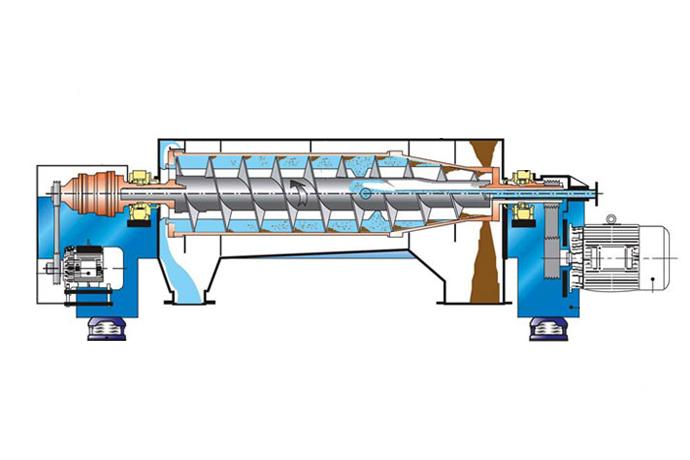
CENTRIFUGE DECANTER APPLICATIONS
CENTRIFUGE DECANTER TECHNICAL

CENTRIFUGE DECANTER ADVANTAGES
Model
Drum diameter
mm
Length
mm
Maximum speed
rpm
Hightest separation
factor g
Mixture capacity
m3/h
Motor Power
Kw
Host weight
Kg
Dimension(L*W *H)
mm
LW250-900
250
900
5000
3500
0.5-3
11/5.5
1100
2300*700*1300
LW350-1500
350
1500
3800
2850
1-5
18.5/5.5
2200
3500*1000*1300
LW400-1200
400
1200
3400
2581
1-8
22/7.5
2200
3350*1000*1100
LW400-1600
400
1600
3400
2581
2-10
22/7.5
2400
3850*1000*1250
LW400-1800
400
1800
3400
2581
2-12
22/7.5
2500
4000*1000*1250
LW450-1800
450
1800
3200
2572
5-20
30/7.5
3000
4200*1170*1350
LW450-2000
450
2000
3200
2572
5-25
30/7.5
3300
4400*1170*1350
LW530-2280
530
2280
2800
2350
10-50
45/15
4000
4750*1300*1500
LW600-2400
600
2400
2600
2265
15-65
55/18.5
5000
4800*1350*1950
LW650-2600
650
2600
2400
2100
20-80
55/90
6500
4900*1450*1650
LW720-2500
720
2500
2200
1950
25-90
75/90
7000
5000*1600*1700
LW800-2560
800
2560
2000
1800
30-100
90/132
8000
4600*2200*1400
LW800-3200
800
3200
2000
1800
30-110
90/132
9000
5200*2200*1400
LW900-3200
800
3200
1800
1650
30-150
132/200
10000
5500*2300*1800
